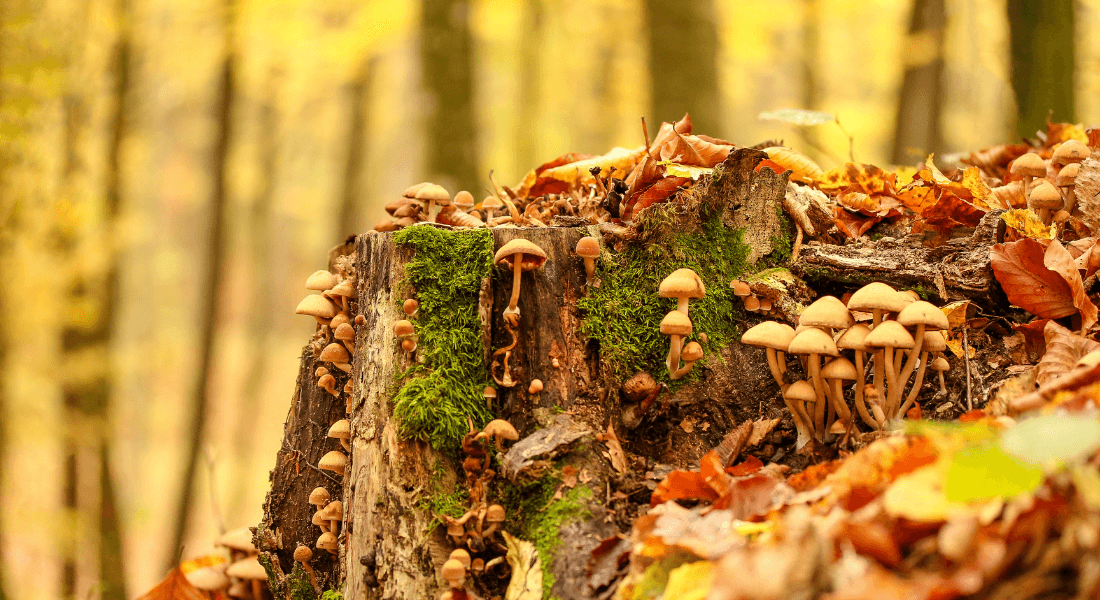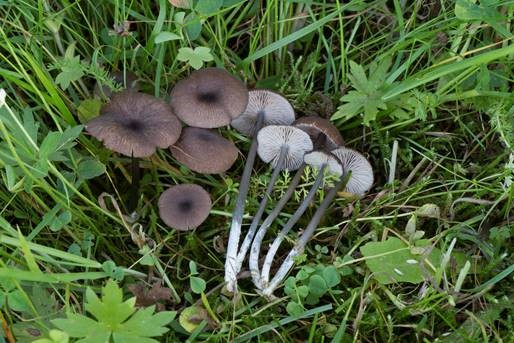Up to 100 new species a year: Denmark is a hotspot for fungus enthusiasts
In Denmark, as many as 100 new fungus species are recorded each year, and a lot of the new species are found by ordinary people hunting for mushrooms in the woods. This October, the project database reached a million findings, which probably makes Denmark the best studied country in the world with regard to fungi.

The Danish Fungus Atlas (Danmarks Svampeatlas) is an online portal developed by the University of Copenhagen in collaboration with the Danish Mycological Society. The portal allows fungus enthusiasts to share their findings and help each other to keep track of waxcaps, jellybabies and other fungi.
The Atlas has already contributed to the discovery of 100 Cortinarius species new to Denmark and as many as six species unknown to science. Associate Professor Jacob Heilmann-Clausen from the Center for Macroecology, Evolution and Climate at the GLOBE Institute, who has been at the head of the Atlas since the second project period, explains:
“When we first launched the project, we knew that we would discover a lot of new species. However, we also believed that we were relatively close to having described the full diversity of macrofungi – which are the ones that are visible to the eye – in Denmark. But the fact that so many species still had not been recorded yet really surprised us,” he says.
If you have a penchant for making discoveries, fungi represent an extremely relevant group of organisms. Here you do not have to dive into the deep sea or move through untouched rainforest on a foreign continent to discover brand new species. You can do so in the local woods, meadows or pastures.
Use your mobile in the woods
Among other things, users of the Atlas can download an app on their phone when exploring the local woods. The app contains descriptions and photos of thousands of fungal species and helps users identify species using new, customised, AI-based image recognition software. Furthermore, the project website gives access to a series of tools in the form of well-illustrated identification wheels and so-called identification keys.
The app may be a bit overwhelming for beginners, but that is because it does not focus on edible mushrooms, Jacob Heilmann-Clausen says.
“You use the camera on your phone to take a picture of the fungus, and the app will then provide you with a list of 10 species resembling the one in the picture. This is done by artificial intelligence. But that does not always do the trick, and this is where the identification keys are useful, guiding you by asking a series of questions. For example, it may ask you: ‘Is the cap blue?’ Or: ‘Is the cap red?’ And when you have answered that question, you will get a new one to help you identify the species at hand.”
The app is free and has helped attract new users, quadrupling the number of users since 2018 till today, where the fungal atlas has around 1,600 annual users. The number is still increasing, and hopefully this will help Denmark hold on to its lead as the most studied fungal nation in the world, says Jacob Heilmann-Clausen.

Discovers 50-100 new species a year
Having access to this highly useful tool you would think that identifying all fungal species in our small country would be a piece of cake, but each year the users discover many new fungi never previously found in Denmark – typically 50-100 new species a year, of which a significant share are large fungi, i.e. agarics, polyporales and similar fungi that are easy to spot in the woods.
“You might think that the large number of newly discovered species is a result of global warming. But this hypothesis was refuted by a new study. Instead we are dealing with species that have been discovered simply because a larger number of fungus enthusiasts spent more time hunting for interesting fungi, and because we now have far better tools available for species identification,” Jacob Heilmann-Clausen explains.
The discovery of new species is often supported by DNA-based techniques that analyse the fungus’s genetic material and make it possible to compare new recordings to reference DNA-sequences representing well-known species.
Using this technique in the project has also made it possible to identify completely unknown species – species never before recorded by science.
“If you have a penchant for making discoveries, fungi represent an extremely relevant group of organisms. Here you do not have to dive into the deep sea or move through untouched rainforest on a foreign continent to discover brand new species. You can do so in the local woods, meadows or pastures,” says Jacob Heilmann-Clausen.
In 2018, citizen Kirsten Munch Pontoppidan thus discovered a reddish brown lamella fungus in a spruce plantation outside Haarby on Funen, which turned out to be an unrecorded Cortinarius species closely related to one only found in Northern America. The new species has not yet been named scientifically, but has also been found in Norway.
The Danish Fungus Atlas, which is funded by the Aage V. Jensen Foundation and the June 15 Fund, is a collaboration between the Danish Fungus Association, Mycokey and the Center for Macroecology, Evolution and Climate at the University of Copenhagen’s GLOBE Institute.
Contact
Associate Professor Jacob Heilmann-Clausen
jheilmann-clausen@sund.ku.dk
+45 35 33 53 87
+45 23 83 99 97
